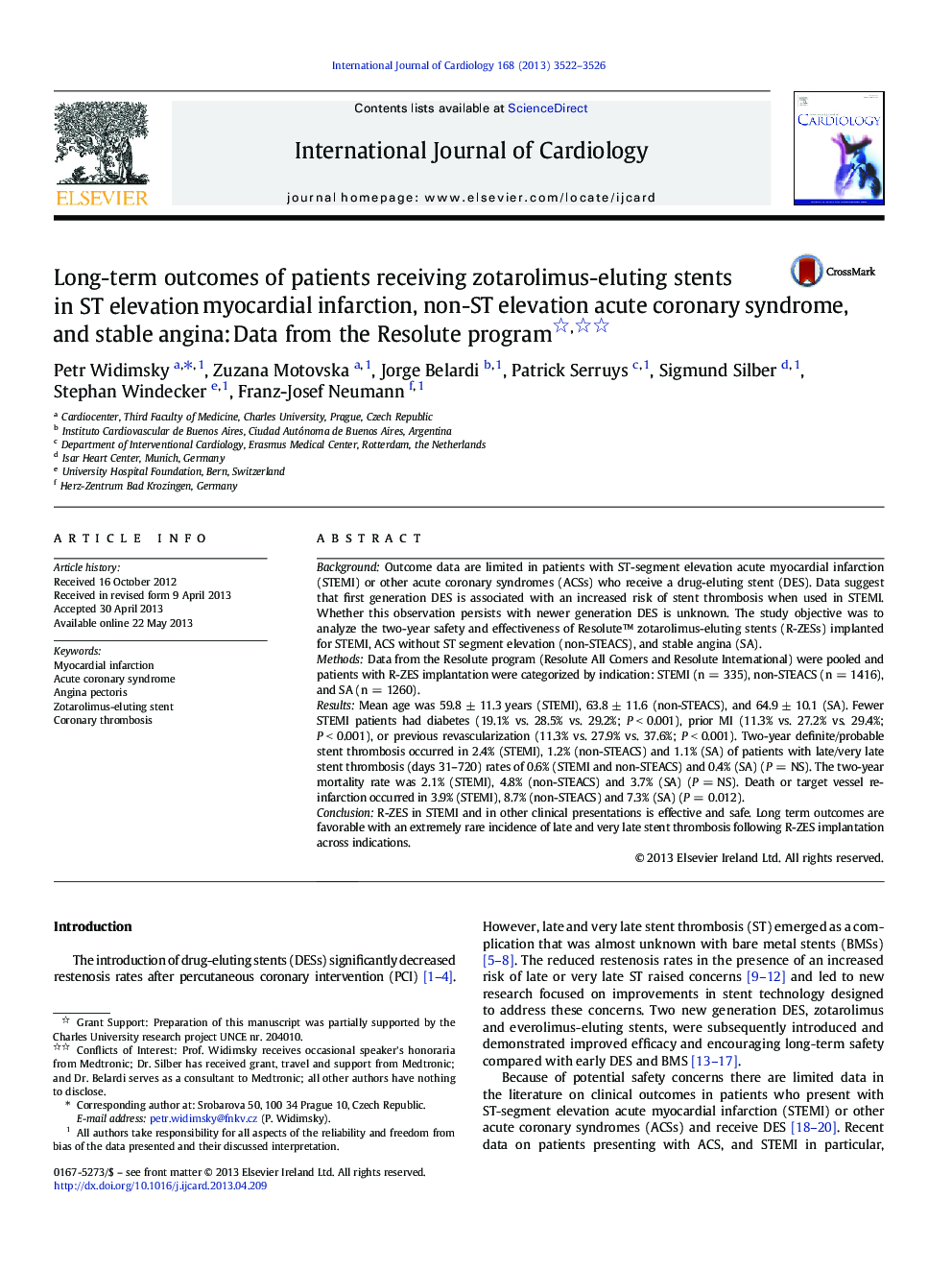| Article ID | Journal | Published Year | Pages | File Type |
|---|---|---|---|---|
| 5973711 | International Journal of Cardiology | 2013 | 5 Pages |
BackgroundOutcome data are limited in patients with ST-segment elevation acute myocardial infarction (STEMI) or other acute coronary syndromes (ACSs) who receive a drug-eluting stent (DES). Data suggest that first generation DES is associated with an increased risk of stent thrombosis when used in STEMI. Whether this observation persists with newer generation DES is unknown. The study objective was to analyze the two-year safety and effectiveness of Resolute⢠zotarolimus-eluting stents (R-ZESs) implanted for STEMI, ACS without ST segment elevation (non-STEACS), and stable angina (SA).MethodsData from the Resolute program (Resolute All Comers and Resolute International) were pooled and patients with R-ZES implantation were categorized by indication: STEMI (n = 335), non-STEACS (n = 1416), and SA (n = 1260).ResultsMean age was 59.8 ± 11.3 years (STEMI), 63.8 ± 11.6 (non-STEACS), and 64.9 ± 10.1 (SA). Fewer STEMI patients had diabetes (19.1% vs. 28.5% vs. 29.2%; P < 0.001), prior MI (11.3% vs. 27.2% vs. 29.4%; P < 0.001), or previous revascularization (11.3% vs. 27.9% vs. 37.6%; P < 0.001). Two-year definite/probable stent thrombosis occurred in 2.4% (STEMI), 1.2% (non-STEACS) and 1.1% (SA) of patients with late/very late stent thrombosis (days 31-720) rates of 0.6% (STEMI and non-STEACS) and 0.4% (SA) (P = NS). The two-year mortality rate was 2.1% (STEMI), 4.8% (non-STEACS) and 3.7% (SA) (P = NS). Death or target vessel re-infarction occurred in 3.9% (STEMI), 8.7% (non-STEACS) and 7.3% (SA) (P = 0.012).ConclusionR-ZES in STEMI and in other clinical presentations is effective and safe. Long term outcomes are favorable with an extremely rare incidence of late and very late stent thrombosis following R-ZES implantation across indications.
